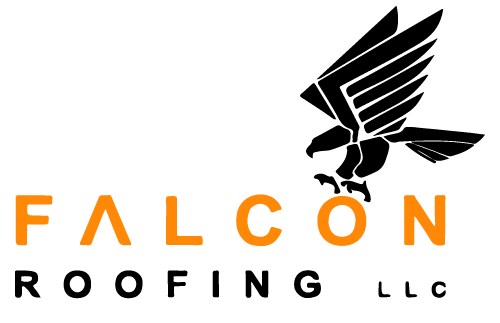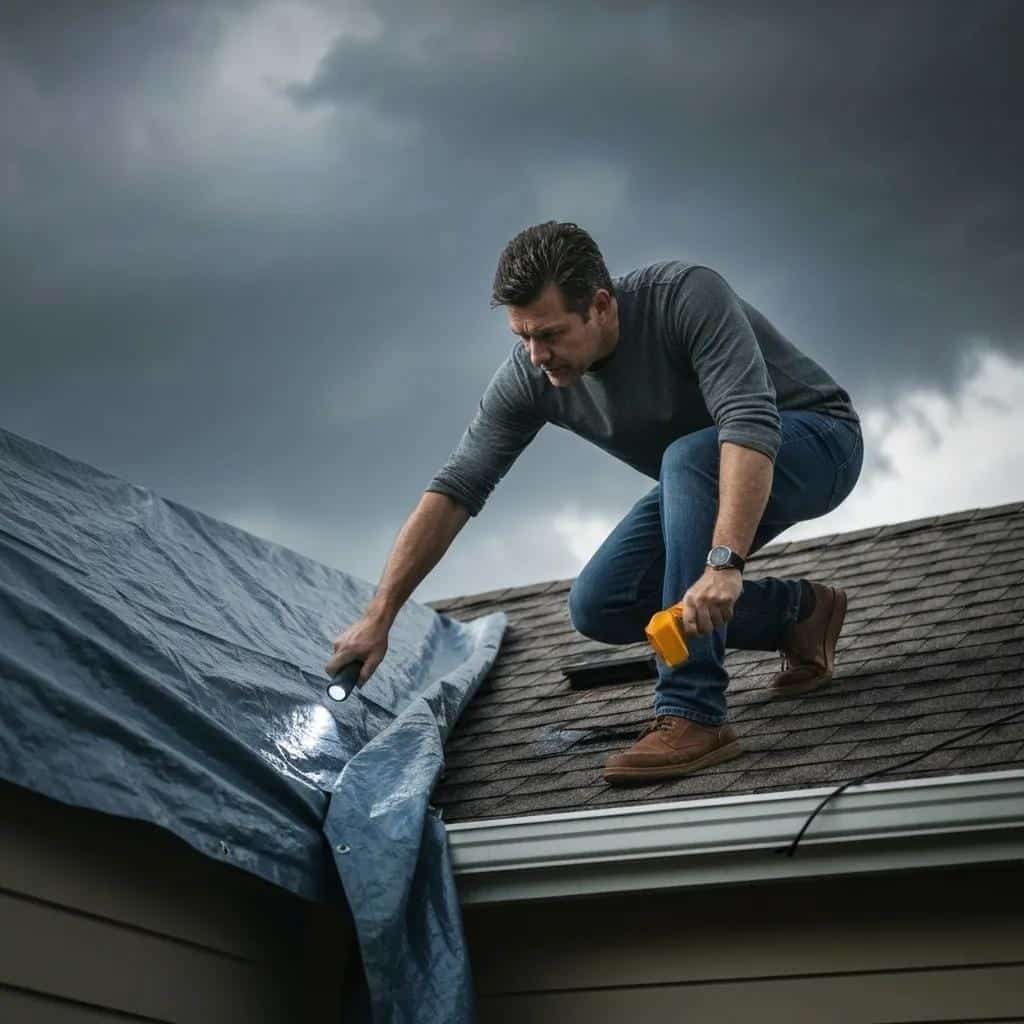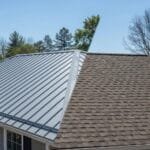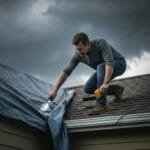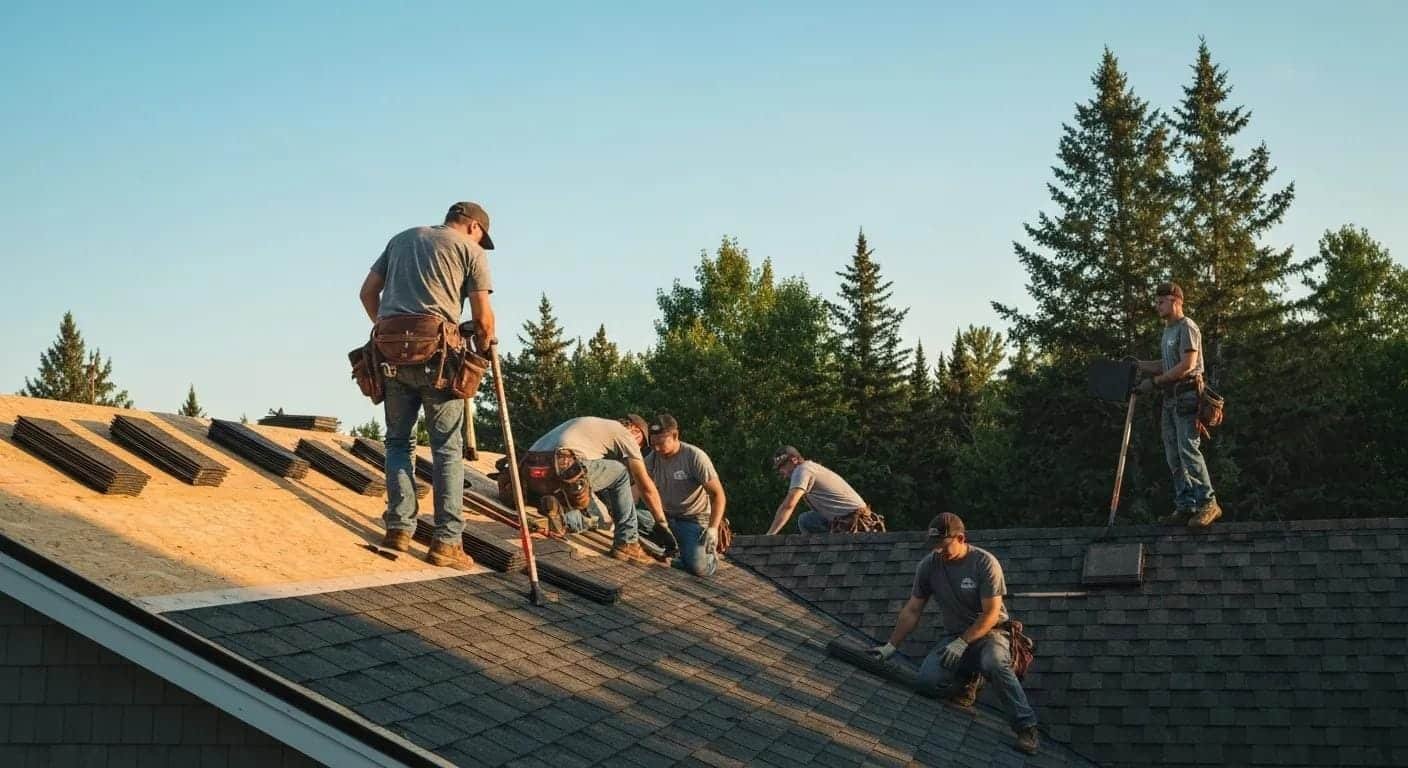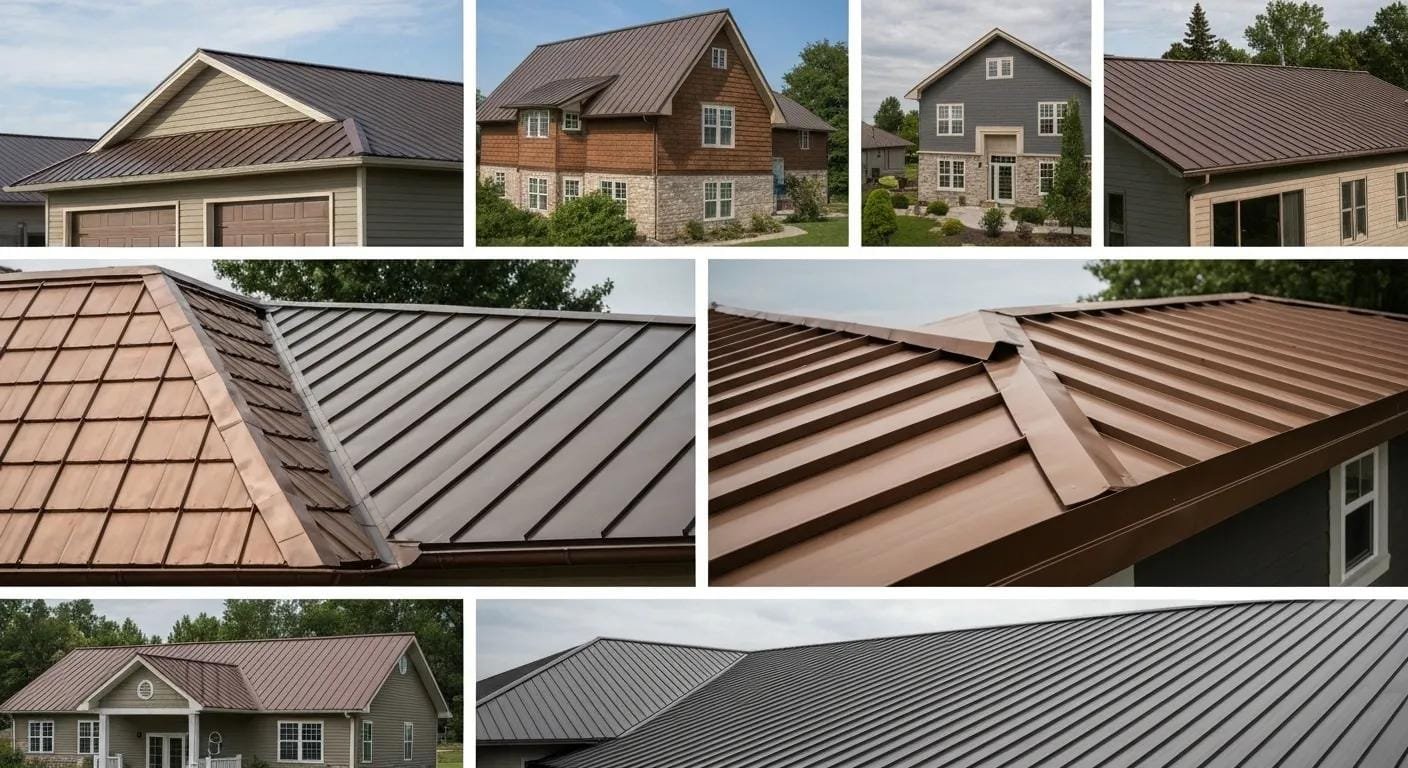Safeguard Your Home: Proven Emergency Roof Repair Solutions
When a sudden leak or storm breach threatens your attic and living spaces, time is of the essence—an untreated roof leak can lead to thousands of dollars in interior damage daily. This guide will walk you through proven emergency roof repair techniques for quick fixes that will secure your property until permanent solutions are in place. You’ll learn how to pinpoint leak sources and apply temporary patches, perform rapid storm damage tarping and shingle stabilization, execute a weatherproof roof tarp installation, address common emergencies like ice dams and flat-roof leaks, recognize when professional help is needed, and evaluate the fastest urgent repair methods for reliable leak protection. Backed by the expertise of Falcon Roofing – Northern Michigan’s Premier Roofing Company, this resource equips homeowners and business owners around Traverse City with actionable steps and essential safety best practices.
What Are the Most Effective Temporary Roof Leak Repair Methods?
Temporary leak repair methods provide an immediate barrier against water intrusion, preventing further structural damage. By combining precise diagnostics, the right materials, safe application steps, and clear decision-making criteria, you can stabilize minor leaks until a permanent roof repair or replacement can be completed.
Emergency Roof Repair Techniques
Methods for Dealing with Roof Leaks
Roofers often use sealants to fix minor damage, gaps, or cracks in roofs. Applying roofing cement can fill small holes, cracks, or spaces in roofing materials, creating a waterproof barrier. Roof patches are used to fix larger holes or damaged spots by removing the affected area and replacing it with a new piece, sealing the patch’s borders to prevent water from getting in.
Warren Thompson, 13 Methods for How to Deal with Roof Leaks, (2024)
How Do You Identify the Source of a Roof Leak Quickly?
Locating a roof leak source begins with an attic inspection during rainfall or by simulating water flow with a garden hose. Water tracks along roof sheathing and rafters before dripping, so follow these steps:
- Place a clean bucket where you see dripping to confirm active leakage.
- Have an assistant spray the roof in sections, starting from the lowest point and working upward.
- Watch inside the attic for water penetration points along seams, vents, and flashing.
Pinpointing the origin streamlines repair efforts and prevents wasted materials, setting the stage for selecting the correct temporary fix.
What Materials Are Essential for Temporary Roof Leak Repairs?
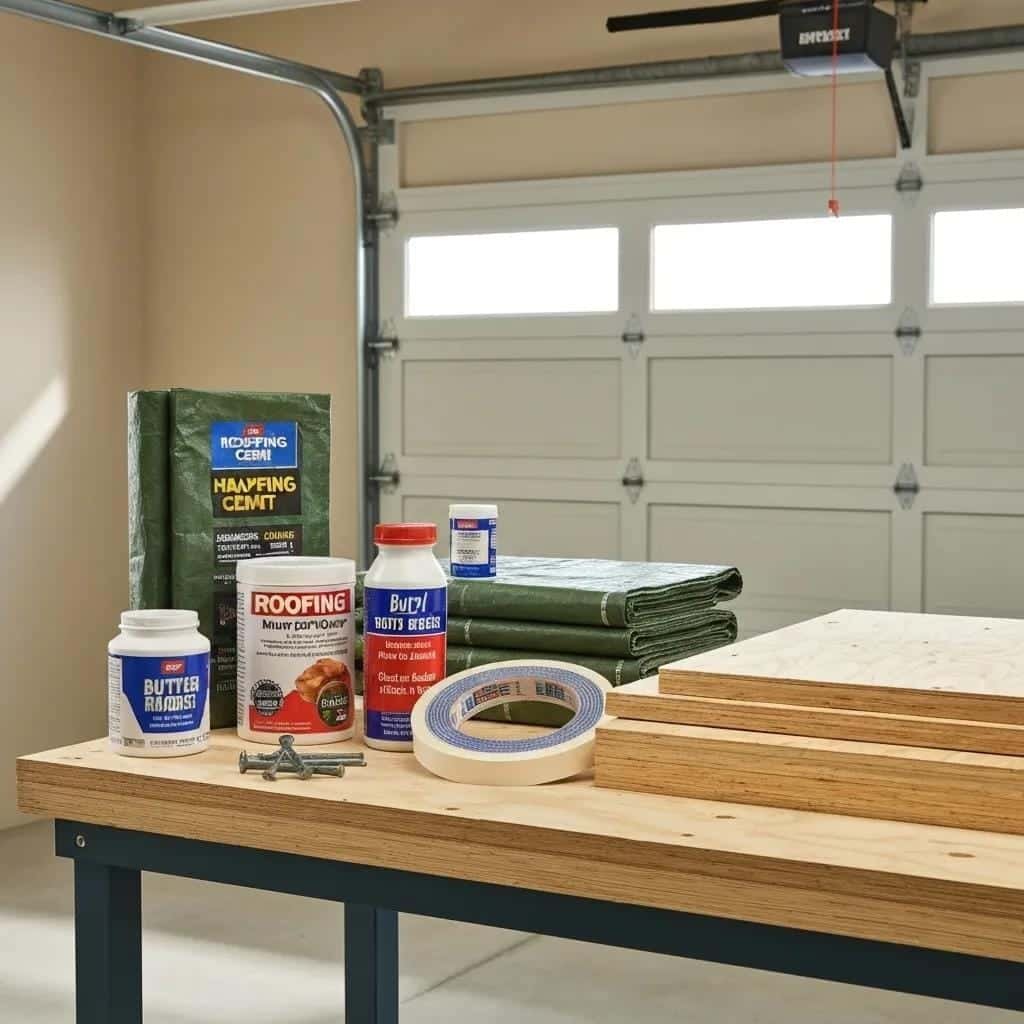
Effective temporary leak repairs rely on a concise materials kit that balances durability with ease of application. The table below outlines core supplies, their intended purpose, and the benefit they deliver.
| Supply | Purpose | Benefit |
|---|---|---|
| Roofing cement | Seals small cracks and gaps | Creates a watertight barrier in minutes |
| Heavy-duty tarp | Covers larger breach areas | Diverts water flow away from damaged sections |
| Marine-grade plywood | Provides rigid support under tarps | Prevents sagging and wind uplift |
| Galvanized nails | Secures plywood and flashing | Resists corrosion and holds fast |
| Butyl rubber tape | Adheres to flashing intersections | Conforms to irregular surfaces for leak sealing |
Each material plays a specific role in establishing and maintaining a temporary moisture barrier, enabling you to contain leaks until professional sealing or shingle replacement can be scheduled.
What Are Step-by-Step DIY Emergency Roof Repair Steps for Small Leaks?
A systematic approach ensures small leaks receive targeted attention and remain contained. Follow these steps for a rapid DIY patch:
- Clear debris and thoroughly dry the immediate area around the leak.
- Apply roofing cement directly into the crack or hole, smoothing it with a putty knife.
- Press a patch of roofing membrane or a piece of shingle into the wet cement.
- Seal the edges of the patch with a final layer of cement, tapering the edges to prevent water pooling.
- Inspect from inside the attic after the next rain to confirm the leak is contained.
Emergency Roof Repair Techniques
How to Apply Roofing Cement
Roofing cement should be applied in thin layers for maximum efficacy, and the area of application must be cleaned thoroughly. Roofing cement can be used to create a water-resistant seal around chimneys and vents or in roof valleys.
Feldco, Roof Cement Installation Guide: Elevate Your Home’s Protection In 2024, (2024)
Completing this sequence within 20–30 minutes can halt minor leaks and protect ceilings from stains and mold growth until a permanent repair is arranged.
What Safety Precautions Should You Take During DIY Roof Repairs?
Roof work exposes you to fall risks, slipping hazards, and electrical dangers. Before ascending, always:
- Wear a safety harness attached to a secure anchor point.
- Use slip-resistant footwear and keep tools tethered.
- Check weather forecasts to avoid repair attempts in rain, snow, or high winds.
- Shut off power to any attic lights or fixtures near the work area.
Prioritizing safety reduces the chance of injury and ensures you can complete emergency repairs effectively whenever conditions permit.
When Is a DIY Temporary Fix Not Enough?
DIY quick fixes may fail to address underlying structural damage or extensive roofing system failures. Seek professional assessment when you observe:
- Water infiltration over a wide area or multiple drips across rafters.
- Soft or sagging decking underfoot, indicating rot.
- Visible damage to ridge vents, chimney flashing, or multiple missing shingles.
- Ice dams that repeatedly reform despite heat wire or de-icing attempts.
Recognizing these signs early ensures you call in trained technicians before minor problems escalate into major leaks and costly interior damage.
How Can You Perform Fast Storm Damage Roof Repair Quick Fixes?
Rapid storm damage repair techniques focus on stabilizing compromised areas, preventing interior water penetration, and securing loose components until full restoration is possible. These measures minimize exposure and protect building contents.
How Do You Assess Storm Damage to Your Roof Quickly and Safely?
Evaluating storm damage involves a ground-level survey followed by an attic inspection to confirm interior impact:
- From the ground, scan for missing or detached shingles, dents on metal components, and displaced flashing.
- Inspect gutters and downspouts for granule buildup, indicating shingle abrasion.
- Enter the attic—if safe—and look for daylight streaking, water stains, or moisture accumulation.
This structured assessment identifies hazard zones and informs targeted emergency measures, creating a clear action plan before ascending the roof.
What Are the Best Emergency Roof Tarping Techniques for Storm Damage?
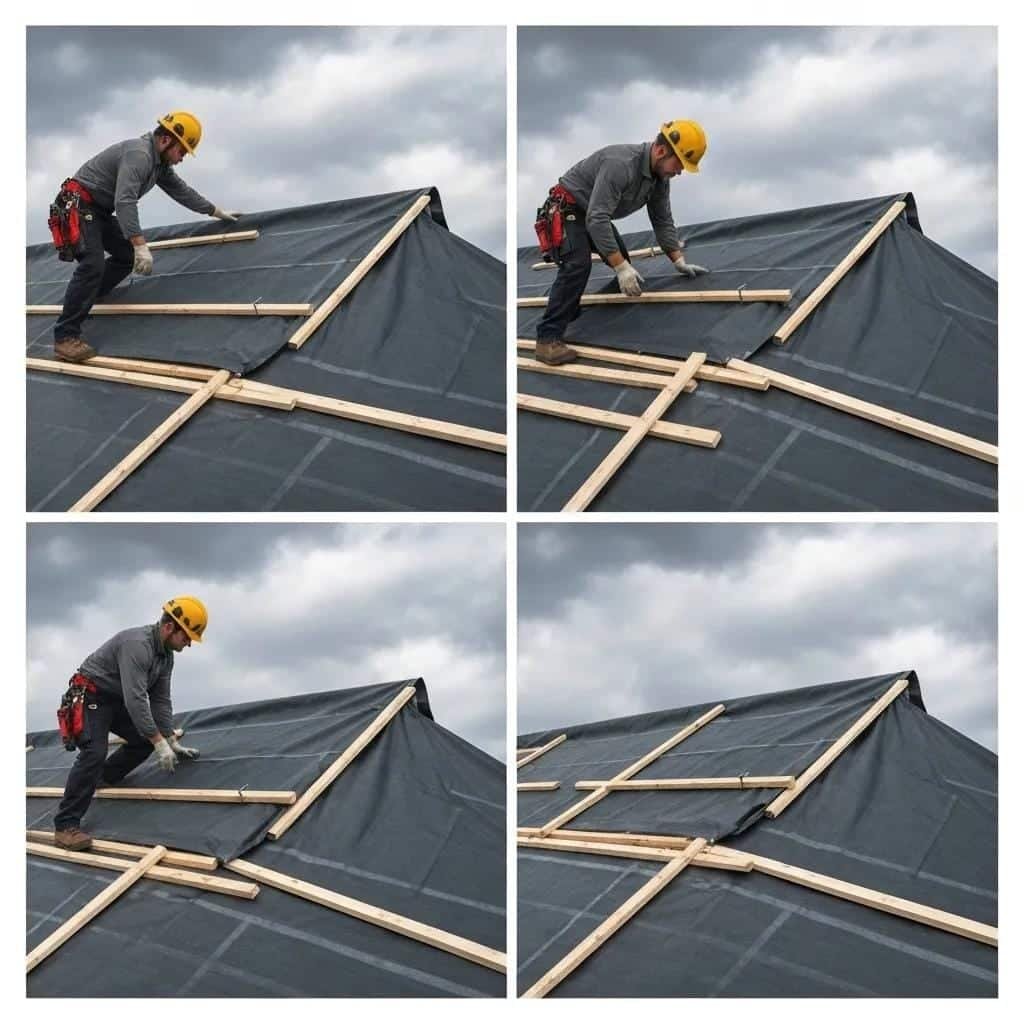
Emergency Roof Repair Techniques
Emergency Roof Tarping
When tarping a roof, the tarp should extend over the damaged area by at least three feet on all sides. The tarp can be secured using nails or screws, ensuring it is tight enough to resist wind.
Johnson Restoration, DIY Guide: How to Temporarily Tarp Your Roof in an Emergency, (2023)
A heavy-duty tarp installation safeguards broad damage zones and stops pouring rain. Use this best-practice method:
- Lay the tarp over the damaged area, extending at least three feet beyond the leak edges.
- Position wood battens perpendicular to the roof slope to sandwich the tarp and distribute wind loads.
- Secure battens with galvanized nails at 12-inch intervals through the tarp and into the deck sheathing.
- Tie tarp corners to robust anchor points—like chimney flanges or ridge vents—to prevent uplift.
Executing this technique within an hour of damage stops water entry and buys valuable time for comprehensive repairs.
How Do You Secure Loose or Missing Shingles After a Storm?
Securing loose shingles prevents further detachment and exposes the decking less to the elements:
- Nail down partially lifted shingles using roofing nails through the existing nail line.
- Slide replacement shingles under intact rows, aligning tabs and nailing above the cutout line.
- Seal the edges with roofing cement to inhibit wind-driven water infiltration.
Fast shingle stabilization limits leak points and preserves the underlayment until full shingle replacement can be scheduled.
How Can Emergency Board-Up Prevent Further Interior Damage?
Emergency board-up uses plywood and framing lumber to protect large openings around roof penetrations:
- Cut plywood panels to fully cover openings around vents or skylights.
- Attach 2×4 lumber around the perimeter as nailing support.
- Secure panels flush to the deck with multiple corrosion-resistant screws.
This method blocks wildlife, wind-blown debris, and water intrusion, reducing secondary damage to ceilings and insulation.
What Local Weather Conditions in Northern Michigan Affect Storm Damage Repairs?
Heavy snow loads, freezing rain, and high winds common around Traverse City intensify roof stress and ice dam formation. Colder temperatures demand:
- Use of winter-rated membranes and tapes that remain pliable in sub-zero conditions.
- Installing tarps that resist snow accumulation without tearing.
- Monitoring temperature shifts to avoid rapid melt-freeze cycles that worsen ice dams.
Adapting emergency repair methods to these regional climate factors improves the reliability of temporary fixes until permanent solutions are applied.
How to Tarp a Roof: Step-by-Step Guide for Temporary Weatherproofing
A correctly installed tarp acts as a provisional shield when water barriers fail. This guide will lead you through every required tool and procedure to achieve a secure, weather-resistant cover.
What Tools and Materials Are Needed to Tarp a Roof Effectively?
Before you begin, assemble a toolkit that supports safe and efficient tarp installation:
- Heavy-duty polyethylene tarp rated for outdoor exposure
- Wood strips or 2x4s to anchor tarp edges
- Galvanized roofing nails or screws
- Waterproof gloves and slip-resistant boots
- Extension ladder with stabilizer
Having these items on hand ensures a smooth operation without delays that could allow additional water entry.
What Are the Safety Considerations When Working on a Roof?
- Inspect ladder stability and angle before ascent.
- Wear a harness connected to an overhead anchor.
- Keep materials organized to prevent tripping hazards.
- Avoid working on wet or icy surfaces.
These precautions make the difference between a secure rooftop operation and an unsafe emergency repair attempt.
How Do You Properly Secure a Tarp to Prevent Water Intrusion?
- Spread the tarp over the affected slope with at least a 2-foot overhang at the bottom.
- Nail wood battens onto horizontal roof joists, trapping the tarp under the battens.
- Ensure each tarp layer overlaps the one above by 12 inches.
- Drive nails through the battens into the deck sheathing every 12 inches.
This installation pattern channels water off the roof and prevents wind-driven rain from lifting the cover.
How Long Can a Roof Tarp Last as a Temporary Fix?
A professionally installed tarp can shield a roof reliably for 4–6 weeks, depending on severe weather and UV exposure. Regular visual inspections for tears, loose fasteners, or debris accumulation help maintain the tarp’s integrity until a permanent repair is executed.
When Should You Replace a Tarp or Seek Professional Help?
Replace tarps immediately if you notice new tears, loose fasteners, or water infiltration around the edges. If damage zones exceed 50 square feet or if leaks continue beneath the tarp, enlist emergency services to prevent escalating interior damage.
What Are Common Emergency Roof Problems and Their Quick Solutions?
Emergency roof problems vary by building type and climate, but immediate solutions share common techniques. Understanding each issue’s cause and remedy streamlines rapid response.
How Do You Identify and Temporarily Fix Ice Dams on Your Roof?
Ice dams form when heat escapes, melting snow at the ridge, which then refreezes at the eaves. To address them:
- Use a roof rake to remove snow from the ridge down to the eave.
- Apply calcium chloride packs inside pantyhose over the ice dam to melt channels.
- Ensure attic ventilation and insulation improvements to prevent recurrence.
Emergency Roof Repair Techniques
How to Identify and Remove an Ice Dam
To remove an ice dam, you can use a roof rake to remove snow from the edge of your roof. Another method is to use calcium chloride ice melt, which can melt a channel through the ice.
Travelers Insurance, How to Identify and Help Remove an Ice Dam, (2024)
These emergency measures relieve trapped water and protect ceilings from under-dam infiltration.
What Are Quick Fixes for Leaks Around Skylights and Roof Vents?
Leaks at penetrations often result from compromised seals. A fast solution includes:
- Removing old sealant around flashing edges.
- Applying butyl rubber tape under the flashing flange.
- Re-caulking the perimeter with high-performance roofing sealant.
This method re-establishes a watertight seal until full flashing replacement can be scheduled.
How Can You Address Flat Roof Leaks in an Emergency?
Flat roofs require membrane patches and weighted cover:
- Clean and dry the damaged area.
- Cut a membrane patch 3 inches larger than the leak.
- Adhere the patch with cold-applied adhesive, smoothing out air pockets.
- Place a weighted board or sandbag on the patch until the adhesive cures.
A swift patch stops active leaks and secures the membrane against wind uplift.
What Should You Do When Shingles Blow Off During High Winds?
When shingles blow off, roof decking and underlayment become exposed. Tackle this by:
- Lifting adjacent shingles and inserting roofing cement under the tabs.
- Pressing a replacement shingle into the cement and nailing it above the cutout line.
- Sealing nail heads with roof sealant to block water intrusion.
Securing these gaps quickly prevents direct water access to structural elements.
How Do Gutter Clogs Contribute to Emergency Roof Problems?
Clogged gutters cause water to back up under roof edges, leading to leaks and fascia damage. Clearing debris and flush-testing with a hose prevent overflow, ice dam formation, and roof-edge leaks that often require emergency patching.
When Should You Call a Professional for Emergency Roof Repair?
Recognizing when damage exceeds DIY scope safeguards your property and personal safety. Prompt professional intervention addresses structural failures and complex leak sources.
What Types of Roof Damage Require Immediate Professional Attention?
Structural compromises demand expert response. Call a professional if you observe:
- Rotting or sagging roof deck in multiple areas.
- Creased or split flashing around chimneys and vents.
- Persistent leaks during moderate rainfall.
- Areas where interior beams show water staining or mold growth.
These conditions indicate systemic failures requiring licensed technicians and specialized equipment for safe, lasting repair.
How Can Falcon Roofing Assist with Emergency Roof Repairs in Northern Michigan?
Falcon Roofing provides 24/7 emergency response for Traverse City and beyond, delivering expedited tarping, shingle stabilization, and leak sealing. Our certified crews use winter-rated materials suited to heavy-snow conditions and adhere to Michigan building codes for both temporary fixes and permanent restoration.
How Do Insurance Claims Work for Emergency Roof Repairs?
Filing an insurance claim starts with documenting damage through photographs and written notes. Emergency tarping and temporary repairs are often covered under “additional living expenses” or “wind/hail” endorsements. We coordinate with adjusters to validate repair necessity and expedite claim settlements, ensuring you receive fair coverage for both emergency and permanent work.
What Are the Benefits of Professional Emergency Roof Repair Services?
Professional services deliver:
- Rapid response to prevent interior damage.
- Certified installation techniques that meet building codes.
- High-grade materials designed for local climate extremes.
- Comprehensive follow-through from temporary fix to full repair.
These advantages minimize repair cycles and reinforce long-term roof performance.
How to Contact Falcon Roofing for Emergency Roof Repair Assistance?
For urgent roofing assistance and free estimates, Contact Falcon Roofing to Get a Free Estimate or call our emergency hotline. Our dispatch team coordinates immediate service to secure your property and arrange permanent restoration.
What Are the Best Urgent Roof Repair Methods for Fast Leak Solutions?
Urgent repair methods focus on rapid containment and reinforcement to protect interiors until full rehabilitation occurs. Combining proven sealants, reinforcement patches, and system-wide preparations ensures moisture exclusion under all conditions.
How Do Roofing Cement and Sealants Provide Quick Leak Protection?
Roofing cement and polymer sealants deliver rapid sealing by:
- Filling hairline cracks and nail holes within minutes.
- Conforming to irregular roof surfaces and flashing joints.
- Providing flexible, UV-resistant barriers that expand with the roof deck.
Their instant adhesion and waterproofing properties halt active leaks until shingles or metal panels are replaced.
What Are the Pros and Cons of DIY vs. Professional Urgent Repairs?
| Repair Type | Pros | Cons |
|---|---|---|
| DIY Patch | Immediate action, low out-of-pocket cost | Limited durability, safety risks, scope limitations |
| Professional | Certified workmanship, code compliance, warranty | Higher upfront cost, scheduling delays in peak season |
How Can Temporary Plywood Patches Prevent Further Damage?
Plywood patches support tarps and block large roof penetrations by:
- Covering holes where flashing or decking has failed.
- Distributing weight of snow and preventing deck collapse.
- Securing edges to resist wind uplift and wildlife intrusion.
This technique stabilizes compromised areas, reducing interior moisture and structural risks.
What Role Does Roof Flashing Repair Play in Emergency Fixes?
Flashing repair seals roof joints around chimneys, vents, and valleys:
- Remove deteriorated sealant and reattach loose flashing.
- Install butyl rubber tape under the flashing base.
- Re-fasten with corrosion-resistant screws and re-caulk the edges.
Emergency Roof Repair Techniques
Roof Flashing Repair
Roof flashing can be repaired by cleaning and sealing, reattaching loose flashing, or using flashing tape. For severe damage, the flashing may need to be replaced.
The Roofing Company Bristol, How To Repair Roof Flashing? [5 Easy Ways To Repair Your Roof], (2023)
How to Prepare Your Roof for Quick Emergency Repairs During Rain or Snow?
Prioritize pre-storm preparation by:
- Clearing debris from valleys and gutters.
- Inspecting and tightening loose shingles.
- Stocking emergency repair kits with sealants, tarps, and tools.
- Verifying attic insulation and ventilation to reduce ice dam risk.
Advance readiness transforms an urgent repair scenario into a manageable task and preserves interior spaces from sudden water intrusion.
Emergency quick fixes can significantly reduce immediate risk, but they cannot replace comprehensive, permanent solutions. Scheduling a full inspection and lasting repair from certified professionals ensures your roof’s integrity over the long term. By following these temporary techniques and safety precautions, homeowners and business owners in Northern Michigan can minimize damage, protect assets, and maintain peace of mind until permanent restoration is completed. For urgent assistance or a free estimate, reach out to Falcon Roofing’s emergency response team today.
